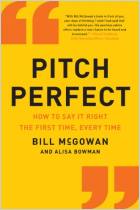Únase a getAbstract para acceder al resumen.

Únase a getAbstract para acceder al resumen.
Chris Davidson
Hear And Now
How Women Get Heard More at Work and Why it Matters
Active Presence Limited, 2015
¿De qué se trata?
Develop your “power voice” to convey your ideas with confidence.
Recommendation
Most women in business feel that their voices carry less weight than their male colleagues’ deeper tones. Corporate speaker and women’s rights advocate Chris Davidson confirms the reality of this vocal obstacle: It’s as much physical as cultural. Resolving the physical obstacle means exercising your vocal muscles to achieve your most resonant voice. Overcoming the cultural obstacle involves learning to appreciate the collaborative “female” model of communication. With this model, you illustrate important points with relevant, personal stories that form memorable emotional connections with your audience. Davidson details each step on your path to giving powerful, accessible presentations, and explains how to use your presentation skills to convey your message effectively in every form of corporate communication. Though Davidson wrote this user-friendly manual for women, getAbstract finds that it could help anyone in the corporate world who wants a strong voice and a confident demeanor, including businessmen who don’t project as well as they’d like.
Summary
About the Author
Award-winning author and public speaker Chris Davidson is a corporate communications consultant. He founded his company, Active Presence, in 2002.


























Comment on this summary